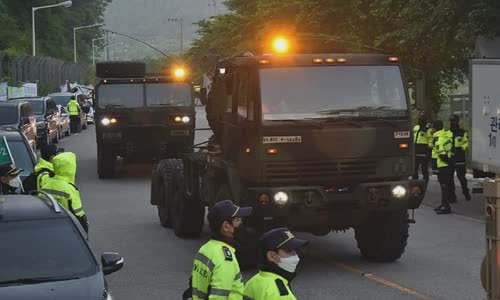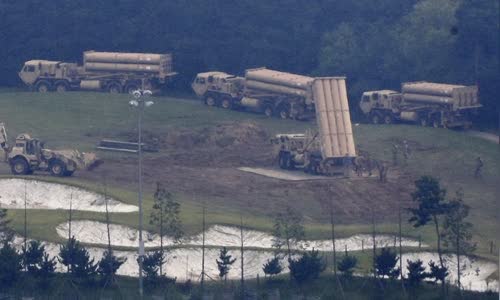The US may be strengthening the capacity of its THAAD system in South Korea, not simply replacing the old shells as claimed, experts say.
The U.S. military on May 28 transferred a number of new missiles and equipment to the Terminal High Altitude Defense System (THAAD) currently in South Korea, replacing the existing shells that have been deployed there since 2017.

THAAD's equipment was delivered to Seongju on the morning of May 29 Photo: Yonhap
The South Korean official, who spoke on condition of anonymity, said it was "a normal supply operation" and that the number of THAAD interceptors did not increase.
"THAAD is a state-of-the-art system, the bullets can stay in storage tubes and launchers for 15 years," said Shin Jong-woo, senior analyst at the Korea Defense Security Forum.
The US THAAD system, located at an old golf course in the mountainous town of Seongju, in southern Korea, came into operation in May 2017.
The move came just days after North Korean leader Kim Jong-un hosted the Central Military Commission meeting to discuss new policies to "further strengthen the country's nuclear war deterrence."
Joongang Ilbo newspaper of South Korea on June 1 said that the equipment delivered to Seongju base last week could help THAAD batteries integrate into the Patriot air defense system's combat network, enhance the ability to intercept names.
South Korea's Ministry of Defense rejected the report, claiming it was a weapon to replace degraded equipment and was not involved in the proposed US system upgrade THAAD.
The Pentagon earlier this year said it was seeking a $ 1 billion budget to upgrade seven THAAD systems, including units in South Korea, within the next year.

THAAD combined launch vehicle deployed to Seongju in 2017 Photo: AP
The THAAD system in Seongju is now designed to operate independently.
The South Korean government denied the question, saying that the process of upgrading THAAD could not happen immediately because it took a lot of time and effort.
The presence and the plan to upgrade THAAD in Korea has repeatedly met with fierce reaction from China.
THAAD has been developed by the United States since 1987 to shoot down short- and medium-range ballistic missiles at the end-stage as they plunge into their targets.
China has always objected to the presence of THAAD in South Korea because of its advanced radar system that provides powerful information gathering capabilities, helping the U.S. military to track all activities of equipment, military equipment.
Many South Koreans also oppose the US's deployment of THAAD, arguing that the system poses health and environmental hazards and poses a risk of becoming a top target for the attack.



 Ben Myers
Ben Myers







